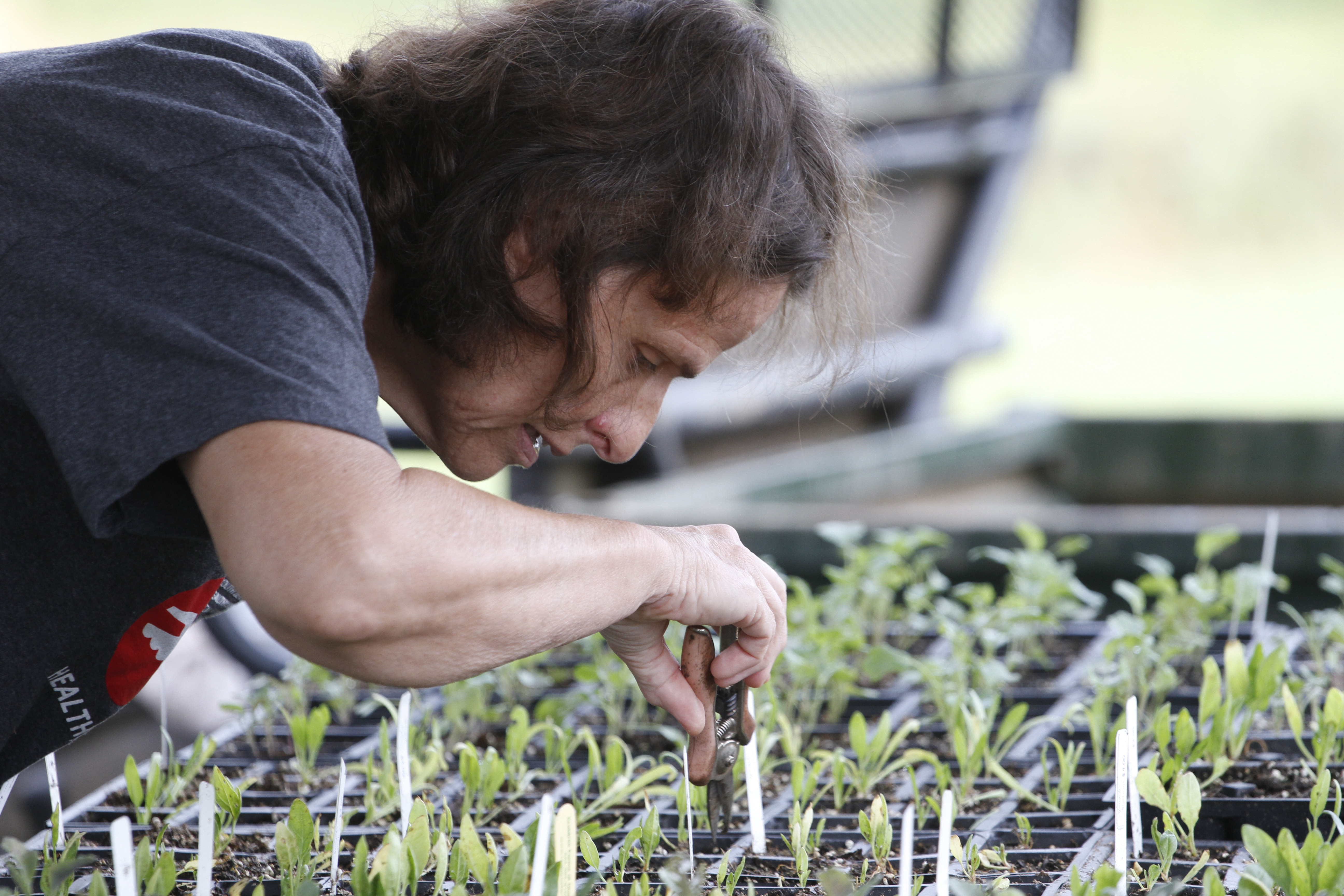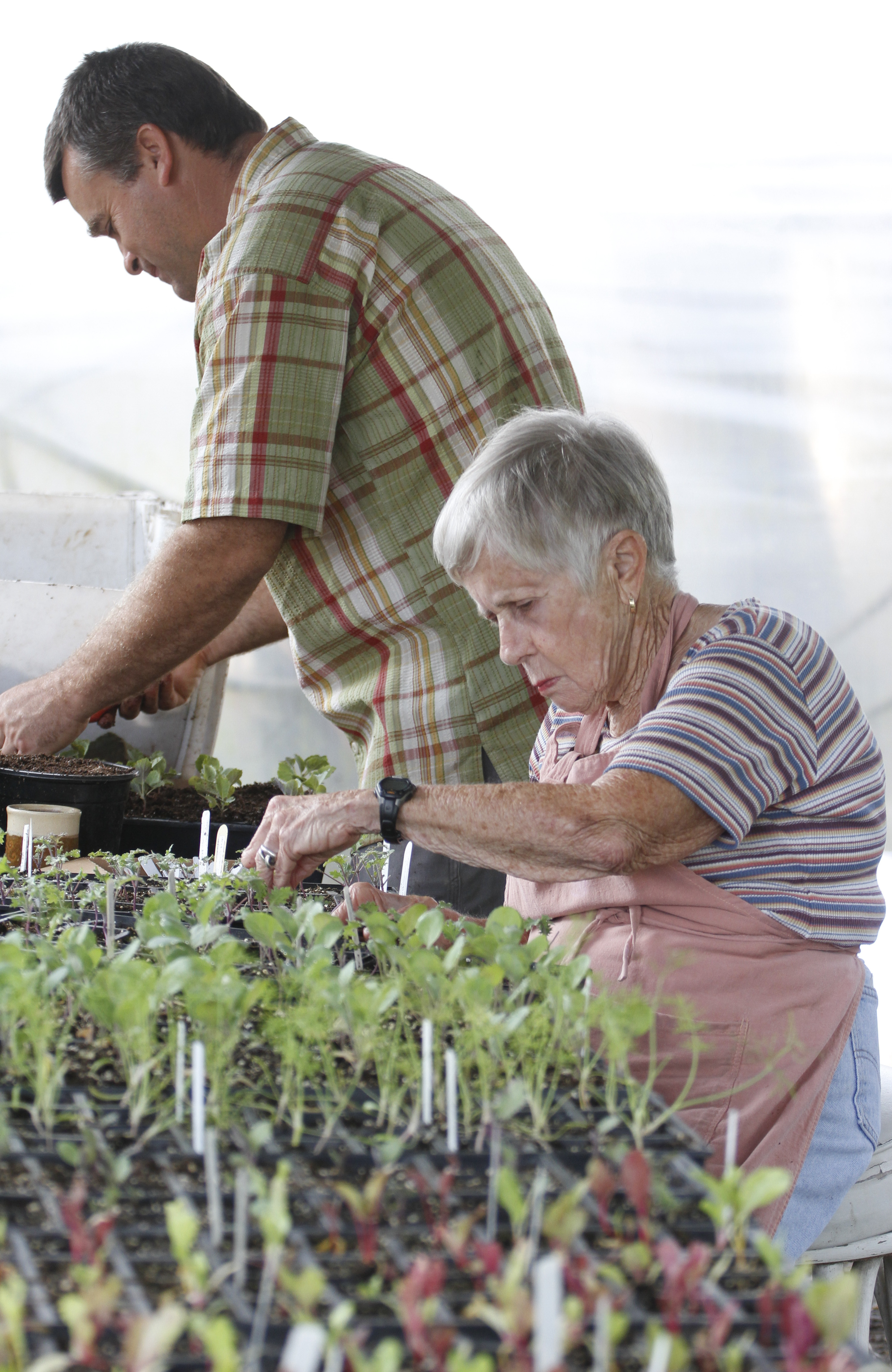In a normal gardening cycle, fall planting begins in late July or early August. However, July's weather doesn't normally produce more than 5 inches of rain, as happened this summer, and those almost-daily deluges have put backyard gardeners behind on getting their seeds in the ground.
"But it's not too late to to get started," UT Extension Agent Tom Stebbins assures gardeners. "There's still plenty of time. There are things that could be planted now, especially greens such as spinach, that can be harvested before first snow."
There are two ways to plant now and make up for lost time. One is with plants already started at local nurseries; the other involves a little math.
Starts are a backyard gardener's short cut. These fledgling plants have been grown from seed in local nurseries and nurtured to the point they are ready to put in the ground. Gardeners can find them in two local fall plant sales as well as in local nurseries.
For the gardener who still prefers to start from scratch, a calculator will come in handy for the subtraction required. The basic rule of thumb, according to the Hamilton County Master Gardeners website, is: Take the area's first frost date (about Oct. 21), subtract the harvest season of the crop you want to grow, days to maturation, then days for germination to determine the best planting date. (See accompanying chart.)
"Starts are definitely a good way to go. You are more assured you'll get a better start on planting. But with spinach or mustard greens, you can get more for your money with seeds," says Stebbins. "You certainly have to count the days we have left and the sun we have left, but when it comes to greens and mustards, we still have plenty of time. Our warm weather seems to extend into November and even December."
Joel Houser, executive director at Crabtree Farms, adds it's not too late for lettuces and cilantro, and that most all crops still have "a good shot at succeeding, especially if winter proves to be as mild as the rest of this year has been."
He also recommends that gardeners plan ahead while fall gardening. This is the season to plant bulbs for colorful spring flowers such as daffodils and tulips.
"It's a good time to plant things for next year, such as garlic and onions, that go over the winter and are harvested next May or June," Houser says. "It's also a really good time in the next month or so to plant perennials for next year -- blueberries, blackberries and any of the perennial herbs."
Paolo Craddock at the Chattanooga Arboretum and Nature Center says fall's mild weather helps shrubs and flowering plants establish nice root systems so "they'll be ready to go in the spring."
At the center's upcoming plant sale, "we will have several plants that bloom in spring, but they will be established after planting now: columbines, black-eyed Susans and beardtongue," Craddock says. "Beardtongue keeps its leaves over winter so, even though they aren't blooming until spring, they add color to the garden."
But when it comes to something really big like trees, Stebbins advises waiting until November to add them to the yard.
"You want to get out of the heat of summer and into fall," he says. "You have to be careful in September and October because those are historically, by 50-year averages, the driest months of the year. You don't want to put a tree in the ground when it's really dry. Cool and moister weather is on the way in November and December, the best time for tree planting."
Contact staff writer Susan Pierce at spierce@timesfreepress.com or 423-757-6284.

